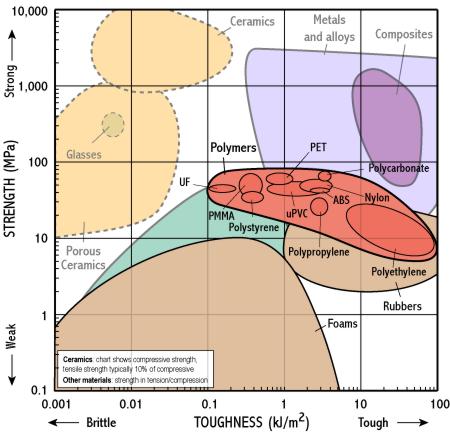
- The strength of polymers is relatively low compared to other materials. However, good design of the moulding shape is able to provide sufficient strength to support the pins. Correct shaping is also important for providing sufficient rigidity for the pins as the stiffness of polymers is relatively low (not shown here).
- In practice, ABS and urea formaldehyde are both used for plugs. The toughness of ABS is a lot greater than that of urea formaldehyde (remember these are logarithmic axes) - this means it can withstand a greater impact before any damage is caused.
- Other materials:
Nylon appears to combine the strength of urea-formaldehyde with the toughness of ABS, so why isn't it used for plug bodies? Looking back at the resistivity-cost chart, we can see that it is much more expensive than ABS or urea-formaldeyde, although this may not be the only reason.
So why are 2 different polymers used?

 Previous
Previous